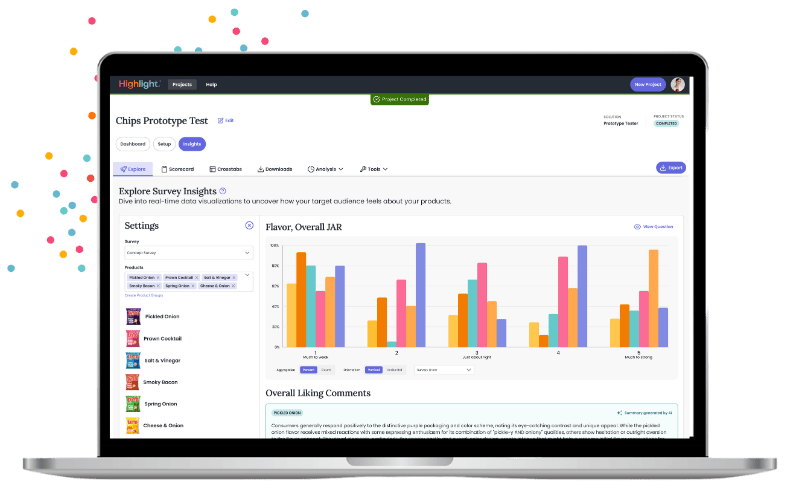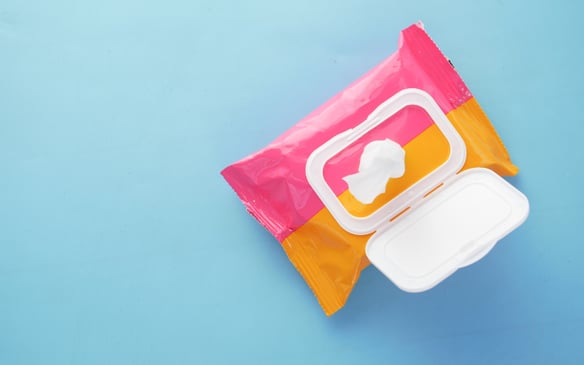You’re writing a sci-fi novel set in the year 2700. One of the characters works for an Earth-based ice cream manufacturer that ships to grocery stores throughout the Milky Way.
After character development, plot, etc., the most important question is: What will the manufacturer’s packaging be like? A few possibilities:
- There could be an inner coating that keeps the ice cream cool, probably using physics that haven’t been discovered yet in 2025. If this system malfunctions, an indicator strip on the outside will glow.
- There might be DNA sensors inside each carton that look for evidence of specific bacteria, triggering the release of bacteriophages to target any common microbes that get detected.
- Perhaps there will be a code that shoppers can scan with their eyes, letting them download their favorite digitally-created scent from a scent database. (You could even let loyal customers create and share their own scents, as long as you have appropriate cybersecurity measures in place to ensure they won’t hack anyone’s brain.)
These would all be examples of smart packaging, 28th century-style. But what we’ve got now is pretty cool too.
Here, we’ll take a look at what’s going on with smart packaging design, and discuss ways to determine whether employing the latest innovations will actually help boost sales.
What is smart packaging?
Smart packaging is a catch-all term for recent advances in packaging technology that go above and beyond what people generally expect from “traditional packaging.” It’s often interactive in some way—perhaps it modifies the environment around your product, or it lets your buyers access discounts on other things you offer.
Let’s start by defining what people expect from regular packaging. At the bare minimum, it should:
- Protect your product from various contaminants.
- Provide an indication of when someone may have tampered with it.
- Help mete out desired portions (single-serve vs. family size).
- Entice shoppers with attractive graphics and claims.
- Display legally required info (like nutrition facts).
OK, now what might smart packaging technology do on top of this? Here are some possibilities:
- Enhance food quality and extend shelf life. Various innovations allow manufacturers to keep food extra fresh and tasty by means of packets and coatings that absorb certain gases (oxygen, ethylene) and inhibit microbial growth. This is important for pet food packaging as well as human food packaging.
- Keep better track of perishables and rein in recalls. For shoppers curious about how smart packaging can help fight food waste, there are a lot of sensing and traceability technologies that help manufacturers track where things are going, how fresh they are, and whether they’ve been kept at the right temperature.
- Verify the authenticity of your product. In addition to providing extra tamper resistance, smart packaging can also help you verify the authenticity of medications, luxury goods, and anything else that’s vulnerable to counterfeiting.
- Give customers extra info and offer them discounts. If you put QR codes on your packaging, you can fit much, much more info about your products (like recipes or how-to guides). You can also get people to sign up for loyalty programs or take them to a series of branded videos or games just for kicks.
- Get data on how people are using your product. When people scan the codes on your packaging, you can get important consumer insights about what sells best. Be sure to comply with privacy regulations and properly de-identify the data.
- Automatically prompt customers to buy refills. This is something Amazon is currently trying out using sensors embedded within the packaging. It seems a bit invasive, but also quite useful. (Just another one of the usual cognitive dissonances of modern life.)
- Support the circular economy. Sustainability is driving a lot of the latest packaging innovations. Smart packaging can help the environment by improving waste management efficiency via technologies like RFID and digital watermarks.
What are the types of smart packaging?
Since smart packaging encompasses an entire swath of emerging technologies, it helps to break it down into a few categories based on function. Note that these categories overlap somewhat.
First off, we’ve got intelligent packaging. Yep, intelligent packaging is a subset of smart packaging. (What’s next, quick-witted packaging?) This is all about sensing important aspects of packaged items and relaying this information to customers or people who work the supply chain.
- Example: Time-temperature indicators (TTIs) that show whether a food item has been exposed to too much heat for too long.
- How it works: Most TTIs demonstrate temperature history by changing color in response to a chemical or microbiological process. Enzymatic TTIs employ a biochemical reaction that gets sped up by temperature, while microbial TTIs measure the byproducts of bacteria growing in a certain temperature range.
Next, we’ve got active packaging. While intelligent packaging senses the environment inside a package, active packaging modifies it. There are many subsets of this, including modified atmosphere packaging (MAP), controlled atmosphere packaging (CAP), and active film packaging.
- Example: Ethylene absorbers that slow down the spoilage of packaged fruits and vegetables.
- How it works: In plants, ethylene functions as a hormone that stimulates ripening. Since it’s a gas that gets across cell membranes, one ripening fruit will impact others nearby. (This is the science behind the “one bad apple” saying.) Ethylene absorbers typically contain an adsorbing material (like activated carbon) along with an oxidizing agent (like potassium permanganate).
If you’re looking to give customers more information than you can fit on the box, or you’d like to direct them to a web-based survey or loyalty program, then connected packaging is the way to go. Connected packaging use RFID tags, NFC chips, QR codes, and other technologies to transfer information about the product to a customer’s device.
- Example: Cards printed with conductive ink that let customers unlock videos, games, discounts, and more simply by pressing the card face-down onto a smartphone screen.
- How it works: Conductive ink is basically ink infused with conductive materials, such as silver flakes or graphite. The cards use the electricity in your own fingertips to activate the circuit and trigger your phone to go to a link.
Wondering if there’s a better way to ensure tamper resistance or prove the authenticity of your product? You’ll want to check out the latest developments in security packaging. Many of these technologies could also be classified as intelligent or connected packaging
- Example: Tamper-evident NFC labels that unlock more information about the product’s origins and authenticity.
- How it works: An NFC chip is coated with a seal that exhibits obvious physical changes when someone tries to mess with it. The chip itself holds data that can be encrypted using standards like AES-128.
Possible downsides of smart packaging
Smart packaging has some pretty incredible benefits, and these are only going to expand as innovation keeps marching forward. However, this doesn’t mean that implementing smart packaging is going to be a piece of cake or solve all your issues perfectly. It might not even be worth it, depending on your situation.
Here are a few challenges you’ll need to weigh when considering whether to go for any smart packaging solutions.
High implementation costs
Integrating sensors, QR codes, or connected materials into your packaging is definitely more expensive than just putting your product in a regular box. This can be prohibitive for small- and medium-sized businesses (SMEs).
Scalability issues
There are a lot of reasons why manufacturers might have a tough time scaling up smart packaging solutions. For one thing, different product types might require different implementation methods. For another, it could be tricky to keep up with the advancements of these fast-evolving technologies.
Concerns around consumer data privacy
If you’re using connected packaging to collect user data, then you’ll need to make sure that you’re protecting people’s privacy through encryption and other measures. This isn’t always very straightforward, and privacy regulations are notorious for changing a lot.
Low consumer engagement
Just because you’ve implemented something really cool and useful doesn’t mean people will actually care. Many customers overlook or fail to interact with smart packaging features, reducing the impact of digital experiences or data collection goals.
Difficulty proving ROI
Measuring the direct business value of smart packaging initiatives can be challenging, especially when benefits like brand loyalty or engagement are harder to quantify.
Given these challenges, it’s crucial to do a lot of research before fully committing to revamping your packaging with cutting-edge technologies. And when doing this research, don’t forget to run some studies on whether the changes actually matter to people buying your product.
Will your new smart packaging really make a difference to your customers?
To see if a certain packaging upgrade will delight people and lead to more sales, your best course of action is to test it with real customers in the comfort of their own homes. This is known as in-home usage testing (IHUT), and it’s what we specialize in at Highlight.
Some questions you might want to put to these testers:
- Will your temperature sensor really help them plan the right amount of your packaged meat to buy? Will they trust it? Will it help them reduce food waste?
- If you can implement a type of modified atmosphere packaging as either an inner coating or a standalone packet inside your packaging, which option will buyers like best?
- Does your packaging design and messaging clearly communicate the added value? If you’re investing in sustainable smart packaging, are you spelling this out well enough to gain loyalty among sustainability-focused shoppers?
Highlight can help you test your packaging for usability, claims resonance, and sheer enjoyment. Since your testers are at home, experiencing your product within the context of their daily lives (rather than commuting to a central location), you can easily do longitudinal testing to see how your quality indicators help them plan out their food usage over time.
Get a sense of direction in a world buzzing with innovation
Trying to make sense of all the latest packaging trends—including smart packaging—can be pretty overwhelming. At Highlight, we’re here to help you get the customer insights that will help you pivot to the right strategy.
Armed with clear, accurate data, you can focus more on the joy of seeing what these new developments can do for your brand. It’s an exciting time!


![[Image] Highlight team Holiday party 2022](https://www.letshighlight.com/hs-fs/hubfs/%5BImage%5D%20Highlight%20team%20Holiday%20party%202022%20.png?width=1920&height=1080&name=%5BImage%5D%20Highlight%20team%20Holiday%20party%202022%20.png)


